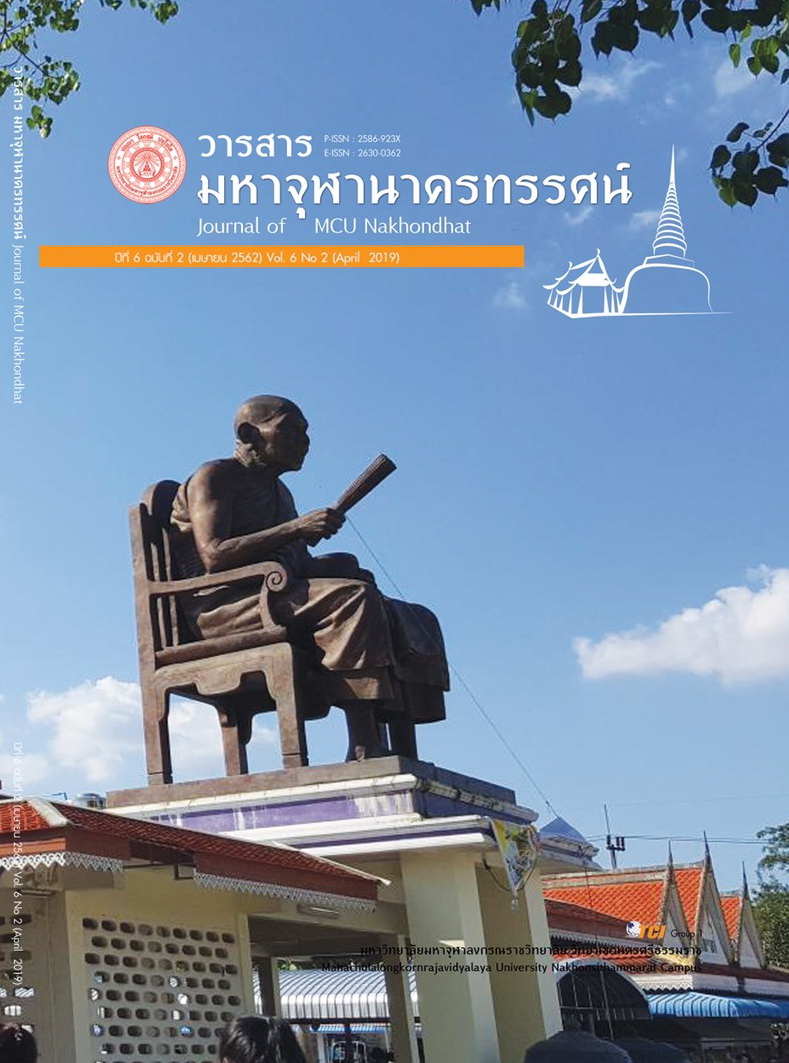ACADEMIC LEADERSHIP DEVELOPMENT MODEL BASEDTHE ON BUDDDHADHAMA FOR DHAMMA FOR ADMINISTRATORS FO SECONDARY SCHOOLS UNDER BANGKOK METROPOLITAN.
Main Article Content
Abstract
This research aims to 1) study the current state and problems of academic leadership in Buddhism for secondary school administrators. 2) to study the development of a model for the development of academic leadership in Buddhism for secondary school administrators. 3) to propose a model for development of academic leadership in Buddhism for secondary school administrators. Bangkok Metropolitan Administration Using Mixed Methods Research: Qualitative Research by Documentary Research. And to create a semi-structured interview. In-depth interviews were conducted by 4 key informants, developed by Focus Group Discussion, 10 experts per subject, to check the format using standardized questionnaires. 4) 1) Benefit 2) Feasibility 3) Relevance 4) Accuracy The first two groups were 266 subjects. 108 of the statistical methods used to analyze the data, percentage and standard deviation.
Findings were as follows:
- Current Situation and Problems of Academic Leadership in Buddhism for Secondary School Administrators. The study found that education must be able to adapt to change. Information and communication to develop the teaching and learning process will be successful. The PDCA process must be systematically implemented. Encourage educational institutions as learning resources. Accepted by parents and community. Collaborate with universities, invite parents, teachers, and students together to build networks and exchange academic learning. The school administrators have measured and evaluated progress in implementing the vision. Mission and Mission And the administrators of the schools together with the teachers to supervise the system to monitor the management of continuous teaching and learning is still less.
- Development of a model for the development of academic leadership in Buddhism for secondary school administrators. Part 1: Introduction 1) Principle 2) Objectives 3) The context of the school Part 2 Part 2 The development model of academic leadership consists of 1) Components of academic leadership. 2) Academic leadership development. 3) Good character of academic leaders. 4) Principles of developing leadership. 5) Academic Leadership Development Activities Part 3 Part 3 The implementation of the model consisted of: 1) Preparation 2) Implementation 3) Performance Evaluation Part 4 Conditions of Implementation 1) The size of the school. 2) The changes in the school environment.
3.The results of the examination on the model of leadership development in Buddhism for secondary school administrators. Bangkok Metropolitan Administration The overall level is very high. When considering each aspect from the least to the least, it found that the benefits. Accuracy Suitability and the possibilities. At the high level, respectively.
Article Details
References
ธีระ รุญเจริญ. (2553). การบริหารการศึกษายุคปฏิรูปการศึกษา. กรุงเทพมหานคร: แอล.ที.เพรส จํากัด.
พระพรหมคุณาภรณ์ (ป.อ.ปยุตฺโต). (2554). พจนานุกรมพุทธศาสน์ ฉบับประมวลศัพท์. กรุงเทพมหานคร: โรงพิมพ์พระพุทธศาสนาของธรรมสภา.
สถาบันพัฒนาความก้าวหน้า. (2553). ยุทธศาสตร์การพัฒนาวิชาชีพผู้บริหารสถานศึกษาตามหลักเกณฑ์ใหม่. กรุงเทพมหานคร: เอส.พี.เอ็น.การพิมพ์.
สำนักงานคณะกรรมการการศึกษาขั้นพื้นฐาน. (2550). ข้อมูลเทคโนโลยีสารสนเทศ . กรุงเทพมหานคร: สำนักงานเขตพื้นที่การศึกษา.


